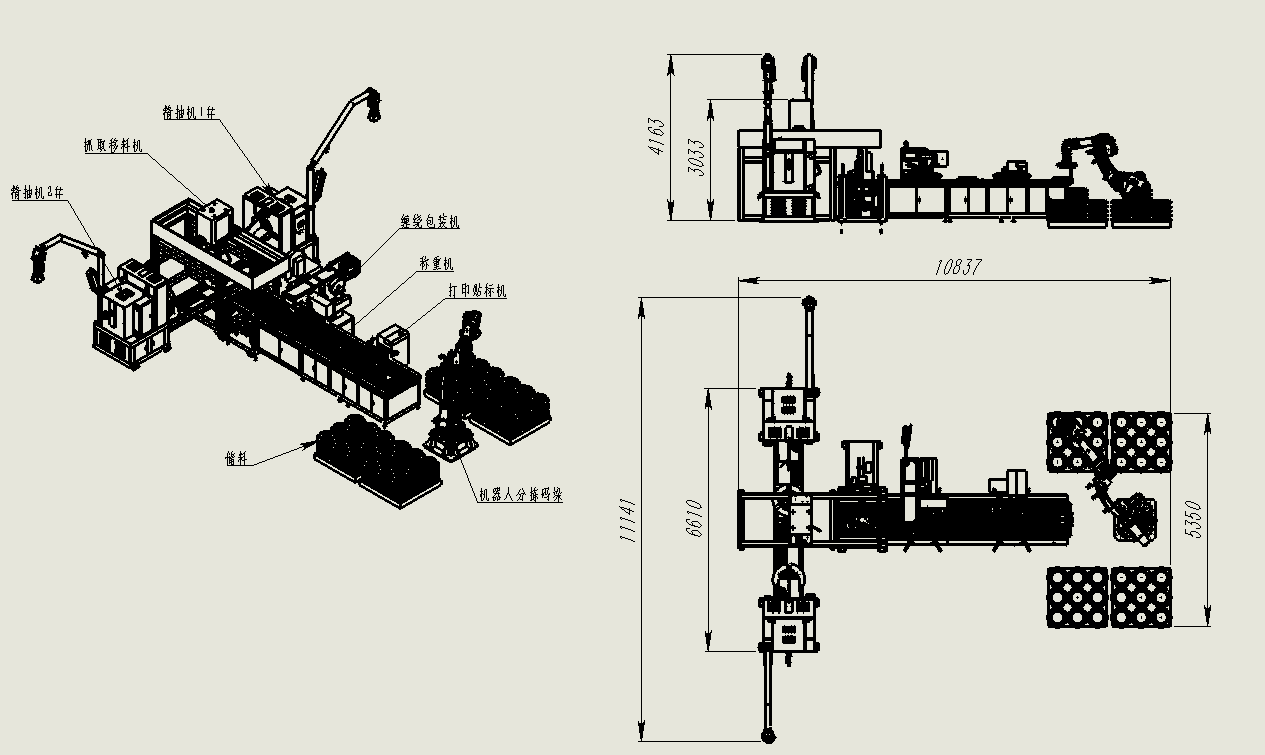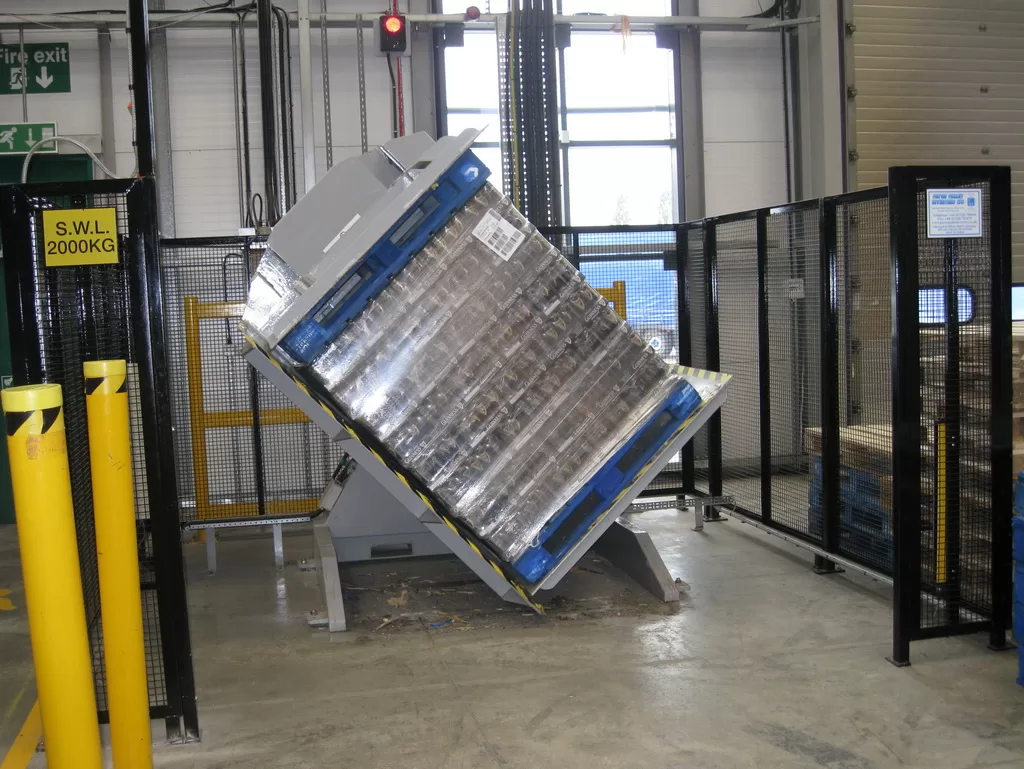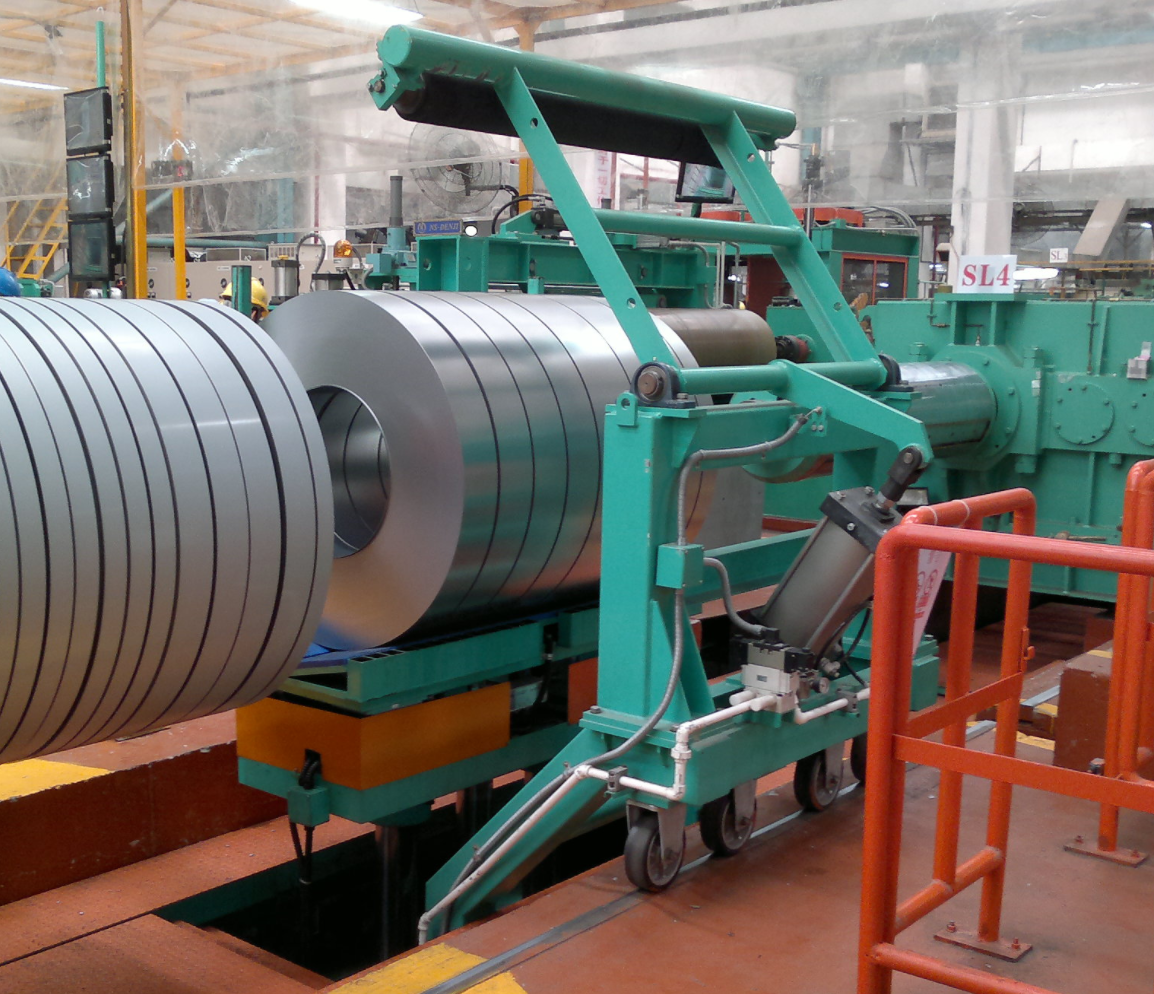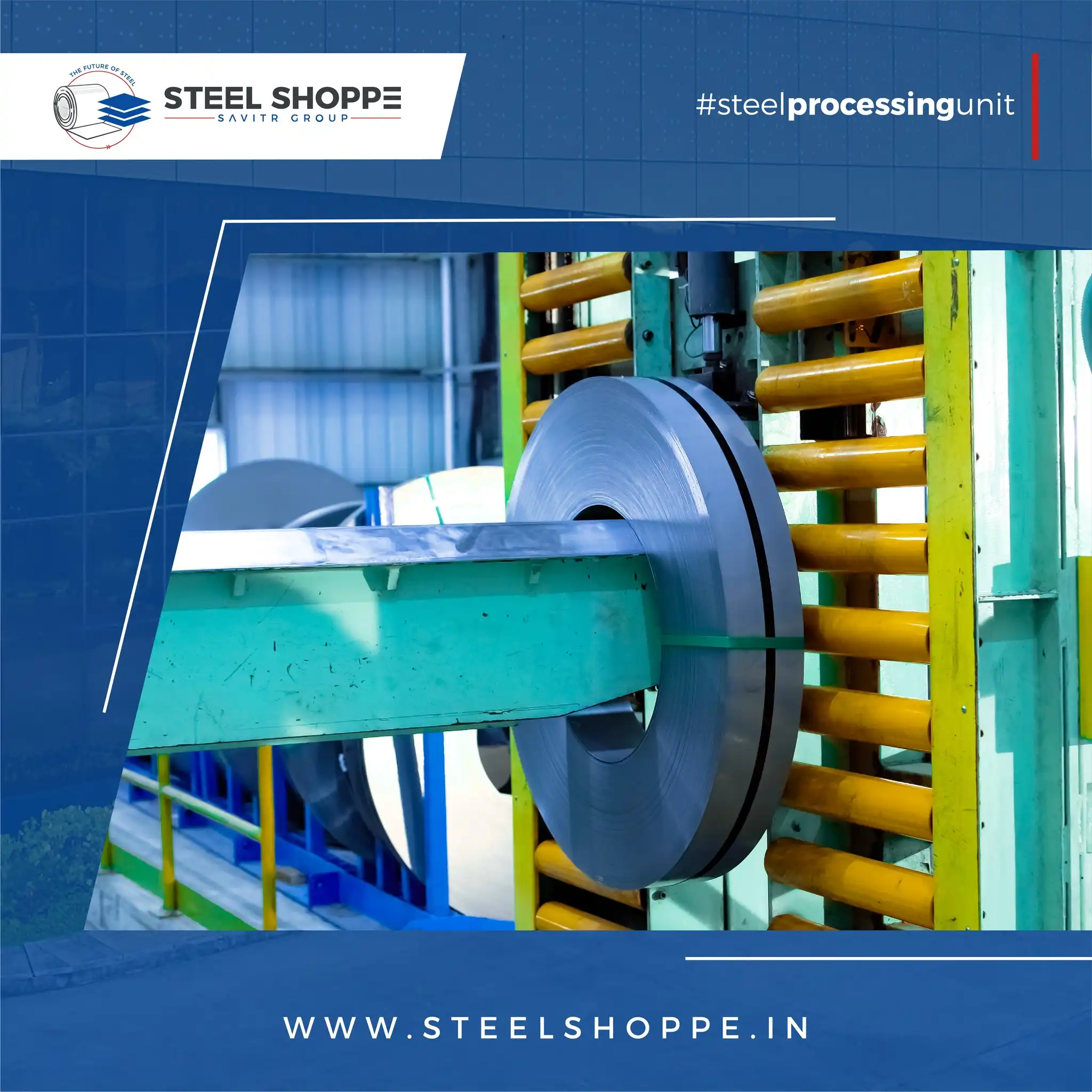What should you know for the precise steel coil packing and stacking?
Are you tired of damaged steel coils and inefficient packing processes slowing down your operations? Improper packing and stacking can lead to costly damage, safety hazards, and wasted time. Ensuring precision in steel coil packing and stacking is not just about aesthetics; it’s about protecting your investment and optimizing your workflow.
Precise steel coil packing and stacking require careful consideration of factors like coil dimensions, weight, material type, and handling environment. Utilizing automated coil packing lines, selecting appropriate packing materials, and implementing proper stacking techniques are crucial for preventing damage, ensuring safety, and maximizing efficiency in steel coil handling.
This guide will walk you through the essential aspects of achieving precise steel coil packing and stacking, helping you minimize risks and enhance your operational efficiency. Let’s dive into the critical details that can transform your coil handling process from a potential headache to a streamlined, value-added operation.
Understanding Steel Coil Packing Precision
Are you struggling with inconsistent packaging that compromises the integrity of your steel coils? Inaccurate packing can lead to shifting during transit, moisture damage, and even surface defects, resulting in rejected shipments and dissatisfied customers. Precision in coil packing is the key to maintaining coil quality and ensuring they arrive in perfect condition.
Achieving precision in steel coil packing starts with understanding the specific requirements of each coil. This includes accurate measurement of coil dimensions (inner diameter, outer diameter, width), precise weight calculation, and selection of appropriate packing materials like stretch film, VCI paper, and edge protectors. Automated systems with coil centering and tension control are essential for consistent and secure wrapping.

But what are the tangible benefits of focusing on packing precision? Let’s delve deeper into the specifics and see how meticulous packing can revolutionize your steel coil handling.
The Impact of Precise Measurement and Material Selection
Precise packing is not just about wrapping coils; it’s a holistic approach that begins with accurate measurements and informed material selection. Let’s break down why these elements are non-negotiable for optimal coil protection.
Accurate Coil Dimensioning
Inaccurate measurements can lead to improperly sized packaging, leaving coils vulnerable to damage. Consider the scenario where the inner diameter (ID) or outer diameter (OD) is miscalculated.
| Measurement Error | Consequence | Impact |
|---|---|---|
| Underestimated ID | ID protector too small, coil edge unprotected | Increased risk of inner coil damage, rust, and deformation |
| Overestimated ID | ID protector too large, ineffective protection | Material waste, inadequate protection, cost inefficiency |
| Underestimated OD | Insufficient wrapping material, coil exposed | Poor weather protection, higher damage during handling |
| Overestimated OD | Excessive material usage, increased packing costs | Waste of packing material, higher operational expenses |
Precise dimensioning, often achieved through laser measurement systems integrated into automated lines, ensures that protectors and wrapping materials fit snugly, providing optimal defense against environmental factors and physical stress.
Optimized Material Selection
Choosing the right packing material is equally critical. Different steel types and transport conditions demand specific materials.
| Packing Material | Application | Benefits | Limitations |
|---|---|---|---|
| Stretch Film | General protection against dust and moisture | Cost-effective, flexible, easy to apply, provides basic protection | Limited puncture resistance, may not be sufficient for long-term storage |
| VCI Paper/Film | Corrosion protection, long-term storage | Inhibits rust formation, suitable for coils prone to corrosion, recyclable | Higher cost than stretch film, effectiveness depends on proper application |
| Steel Straps | Securing heavy coils, preventing unwinding | High tensile strength, ensures coil integrity during transit, durable | Can damage coil edges if not applied correctly, potential for rust |
| Edge Protectors | Protecting coil edges from damage | Prevents edge deformation and damage from strapping, improves handling safety | Adds to material cost, requires proper placement |
| HDPE Sheets | Moisture barrier, heavy-duty protection | Excellent water resistance, robust, good for harsh environments | Less flexible than film, higher material cost |
Selecting a combination of these materials, tailored to the coil’s specifications and journey, is essential for comprehensive protection and cost-effectiveness. For instance, coils destined for humid climates or long sea voyages would benefit significantly from VCI paper and robust waterproof outer wrapping, while coils for short domestic transport might suffice with stretch film and edge protectors.
By focusing on precise measurements and strategic material selection, you establish a robust foundation for steel coil packing, significantly reducing damage risks and ensuring consistent quality.
Mastering Steel Coil Stacking Techniques
Are you facing challenges with unstable coil stacks that pose safety risks and consume excessive storage space? Improper stacking can lead to coil toppling, damage to lower coils, and inefficient use of warehouse capacity. Mastering effective stacking techniques is crucial for safety and space optimization in your coil handling operations.
Effective steel coil stacking relies on understanding weight distribution, coil orientation (eye-vertical or eye-horizontal), and the capabilities of handling equipment like forklifts and cranes. Implementing proper stacking patterns, using pallets or dunnage for support, and adhering to safe stacking heights are essential for creating stable and secure coil stacks that maximize storage density and minimize handling risks.

But what are the practical steps to achieve masterful coil stacking? Let’s explore the techniques and considerations that will transform your storage practices and enhance safety.
- Focus on maximizing vertical space utilization for cost savings.
Optimizing Stacking Patterns and Space Utilization
Efficient coil stacking is more than just piling coils; it’s about strategic arrangement to maximize space and ensure stability. Let’s examine key stacking patterns and space optimization strategies.
Understanding Coil Orientation
Coil orientation – whether eye-vertical (coil axis vertical) or eye-horizontal (coil axis horizontal) – significantly impacts stacking methods and stability.
| Orientation | Stability Characteristics | Space Efficiency | Handling Considerations | Best Suited For |
|---|---|---|---|---|
| Eye-Vertical | More stable base, less prone to toppling | Lower vertical space utilization, wider footprint | Requires lifting from the top, less prone to rolling | Heavy, large diameter coils, shorter storage periods, high throughput |
| Eye-Horizontal | Less stable base, higher risk of rolling if not secured | Higher vertical space utilization, narrower footprint | Requires cradling or specialized lifting, potential for rolling | Lighter, smaller diameter coils, longer storage, space-constrained warehouses |
Choosing the correct orientation depends on coil dimensions, weight, and storage layout. Eye-vertical stacking is often preferred for heavier coils due to its inherent stability, while eye-horizontal stacking can significantly increase storage density for lighter coils in facilities with high ceilings.
Implementing Effective Stacking Patterns
Various stacking patterns can be employed to enhance stability and space utilization.
-
Pyramid Stacking (Eye-Vertical): Coils are stacked in successively smaller layers, resembling a pyramid. This pattern provides excellent stability but limits vertical space utilization. Best for short-term storage of heavy coils.
-
Block Stacking (Eye-Vertical or Eye-Horizontal): Coils are stacked in uniform blocks, maximizing space utilization. Requires careful alignment and may need dunnage or pallets for stability, especially in eye-horizontal orientation. Suitable for long-term storage and high-density warehousing.
-
Interlocking Stacking (Eye-Horizontal): Coils are nested or interleaved in layers to enhance stability. Complex to execute but offers good stability and space efficiency. Used for specific coil types and automated stacking systems.
The choice of pattern should be dictated by coil characteristics, handling equipment, and storage duration. Automated stacking systems can be programmed to execute complex patterns with precision, optimizing both stability and space.
Vertical Space Maximization
Utilizing vertical space is crucial for cost-effective warehousing. Strategies include:
-
High-Bay Racking: Implementing racking systems designed for coil storage allows for safe and organized vertical stacking, significantly increasing storage capacity.
-
Optimized Stacking Height: Determining the maximum safe stacking height based on coil weight, stability, and handling equipment capabilities is vital. Exceeding safe limits can lead to collapses and accidents.
-
Automated Stacking Systems: Investing in automated coil stacking lines with robotic stackers allows for precise and consistent stacking up to optimal heights, maximizing vertical space and minimizing human error.
By mastering stacking patterns and implementing space optimization strategies, you can transform your coil storage from a space-consuming liability into an efficient asset, reducing storage costs and improving overall operational flow.
Leveraging Automated Coil Packing Lines
Are you seeking to minimize manual labor, enhance packing consistency, and accelerate your throughput? Manual coil packing is labor-intensive, prone to inconsistencies, and can be a bottleneck in high-volume operations. Automated coil packing lines offer a transformative solution, boosting efficiency and precision.
Automated coil packing lines integrate various machinery to streamline the entire packing process, from coil handling and centering to wrapping, strapping, and stacking. These systems reduce manual intervention, increase packing speed and consistency, and enhance safety by automating heavy lifting and repetitive tasks. Key components include coil tilters, wrappers, strapping units, stackers, and programmable logic controllers (PLCs) for seamless operation.

But how do these automated lines actually work, and what are the critical components that contribute to their efficiency? Let’s dissect the technology and benefits of automated coil packing systems.
Key Components and Operational Advantages of Automation
Automated coil packing lines are sophisticated systems composed of interconnected machines working in harmony. Understanding the function of each component reveals the holistic efficiency gains of automation.
Core Components of an Automated Line
-
Coil Handling System (e.g., Coil Tilter, Upender): Automates the process of receiving coils, often from a conveyor or coil car, and positioning them correctly for subsequent packing stages. Coil tilters rotate coils from eye-vertical to eye-horizontal or vice versa, facilitating optimal wrapping and stacking orientation.
-
Centering and Weighing Station: Precisely centers the coil on the wrapping platform and accurately measures its weight. Centering ensures even wrapping, while accurate weight data is crucial for inventory management and logistics.
-
Wrapping Machine (Orbital or Rotary Ring): Applies wrapping material (stretch film, VCI paper, etc.) around the coil with consistent tension and overlap. Orbital wrappers are ideal for eye-through wrapping, while rotary ring wrappers are often used for palletized coils. Automation ensures uniform wrapping quality, minimizing material waste and maximizing protection.
-
Strapping Unit: Automatically applies steel or PET straps around the wrapped coil for securement. Strapping can be radial (around the circumference) or axial (through the eye of the coil) or both, depending on coil type and handling requirements. Automated strapping ensures consistent strap tension, preventing coil unwinding during transit.
-
Stacking System (Coil Stacker/Palletizer): Automated system for lifting and stacking wrapped and strapped coils onto pallets or directly onto the floor in a pre-defined pattern. Stackers can be gantry-based, robotic arm-based, or carousel-type, offering various levels of speed and flexibility. Automation ensures neat, stable stacks, maximizing space utilization and safety.
-
Programmable Logic Controller (PLC): The brain of the system, controlling and synchronizing all machine operations. PLCs allow for pre-programmed packing recipes for different coil types, automated adjustments based on coil dimensions, and real-time monitoring of system performance. PLCs ensure seamless, error-free operation and facilitate integration with higher-level factory management systems.
Operational Advantages of Automation
-
Increased Throughput and Efficiency: Automated lines can pack coils much faster than manual methods, significantly increasing throughput and reducing cycle times. Continuous operation and minimal downtime contribute to substantial efficiency gains.
-
Enhanced Packing Consistency and Quality: Automation eliminates human variability, ensuring consistent wrapping tension, strap placement, and stacking patterns. This leads to improved packaging quality, better coil protection, and reduced damage rates.
-
Reduced Labor Costs: Automating coil packing reduces the need for manual labor, lowering labor costs and freeing up personnel for other tasks. In some cases, a single operator can oversee an entire automated line.
-
Improved Safety: Automation minimizes manual handling of heavy coils, reducing the risk of workplace injuries associated with lifting, carrying, and strapping. Safety features like light curtains, emergency stops, and safety interlocks are integral to automated systems.
-
Material Savings: Precise control over wrapping material usage and strapping tension in automated systems minimizes waste, leading to significant material cost savings over time.
By integrating an automated coil packing line, steel manufacturers and service centers can achieve a step-change improvement in efficiency, quality, safety, and cost-effectiveness of their coil handling operations. The initial investment yields substantial long-term returns through optimized processes and reduced operational overheads.
Selecting the Right Packing Materials for Steel Coils
Are you unsure about which packing materials offer the best protection for your steel coils? Choosing the wrong materials can lead to inadequate protection against rust, physical damage, and environmental factors, resulting in costly coil degradation and customer dissatisfaction. Selecting appropriate packing materials is a critical decision for coil preservation.
The selection of steel coil packing materials depends on factors such as the type of steel, intended storage duration, transportation conditions, and environmental exposure. Common materials include stretch film, VCI paper/film, corrugated cardboard, steel/PET straps, and edge protectors. Each material offers specific benefits, and a combination is often used to provide comprehensive protection against moisture, corrosion, physical damage, and handling stresses.

But how do you navigate the array of available materials and choose the optimal combination for your specific needs? Let’s explore the properties and applications of key packing materials to guide your selection process.
Optimizing Material Combinations for Varied Needs
Understanding Material Properties and Applications
Effective coil packing relies on understanding the properties of different materials and matching them to specific protection needs. Let’s analyze key packing materials and their ideal applications.
Key Packing Materials and Their Properties
-
Stretch Film: A highly elastic plastic film that stretches to conform tightly around coils, providing basic protection against dust, dirt, and moisture.
- Properties: Low cost, high elasticity, good conformability, moderate tear resistance, transparent.
- Applications: General-purpose wrapping, bundling, unitizing loads, short-term storage, and protection during transit in covered environments.
- Limitations: Limited puncture and tear resistance, minimal UV protection, not ideal for long-term outdoor storage or harsh environments.
-
VCI (Vapor Corrosion Inhibitor) Paper/Film: Materials impregnated with chemicals that release corrosion-inhibiting vapors, creating a protective atmosphere around steel coils and preventing rust formation.
- Properties: Corrosion inhibiting, available in paper and film formats, recyclable (paper), good moisture barrier (film).
- Applications: Long-term storage, protection of corrosion-sensitive steel grades, export shipments, and environments with high humidity or corrosive agents.
- Limitations: Higher cost than standard films, effectiveness depends on proper enclosure and VCI concentration, may not protect against physical damage.
-
Corrugated Cardboard: Rigid paper-based material used for edge protectors, side covers, and full coil wraps, providing physical protection and cushioning.
- Properties: Rigid, cushioning, recyclable, printable, moderate cost.
- Applications: Edge protection, side wall protection, outer covers, interleaving layers, branding and labeling.
- Limitations: Susceptible to moisture damage, lower strength than steel or plastic, limited barrier properties.
-
Steel Straps: High-tensile steel bands used to secure heavy coils and prevent unwinding, providing structural integrity to the packed coil.
- Properties: High tensile strength, durable, resistant to high temperatures, non-stretchable.
- Applications: Securing heavy coils, bundling, reinforcing packaging, applications requiring high strength and security.
- Limitations: Can damage coil edges if not properly applied, potential for rust, requires specialized tools for application and removal, less flexible than plastic straps.
-
PET (Polyester) Straps: Plastic straps offering a balance of strength and flexibility, used for securing coils and bundles, and providing an alternative to steel straps.
- Properties: Moderate tensile strength, flexible, weather-resistant, recyclable, safer to handle than steel straps, lower cost than steel straps.
- Applications: Securing medium to heavy coils, bundling, palletizing, applications where steel strap strength is not required, and safety is a concern.
- Limitations: Lower tensile strength than steel straps, susceptible to UV degradation over long periods, may creep or stretch under high tension over time.
Optimizing Material Combinations
Effective coil packing often involves combining materials to leverage their complementary properties. Common combinations include:
-
Basic Protection (Short-Term Storage, Domestic Transit): Stretch film wrap + edge protectors + PET straps. Cost-effective for general protection against dust and minor handling damage.
-
Enhanced Protection (Medium-Term Storage, General Export): VCI paper inner wrap + stretch film outer wrap + corrugated side covers + steel or PET straps + edge protectors. Provides corrosion protection, moisture barrier, and physical protection.
-
Robust Protection (Long-Term Storage, Harsh Environments, Sea Freight): VCI film inner wrap + HDPE sheet moisture barrier + corrugated cardboard full wrap + steel straps + heavy-duty edge protectors. Offers maximum protection against corrosion, moisture, physical damage, and harsh handling.
The optimal material combination is a balance between protection requirements, budget constraints, and environmental considerations. Careful assessment of these factors will guide you in selecting the most effective and cost-efficient packing solution for your steel coils.
Conclusion
Precise steel coil packing and stacking are not merely operational tasks; they are critical investments in protecting product quality, ensuring workplace safety, and optimizing resource utilization. By understanding the nuances of coil dimensions, mastering stacking techniques, leveraging automated systems, and selecting appropriate packing materials, businesses can transform their coil handling processes from potential liabilities into sources of efficiency and competitive advantage. Embracing precision in every step of coil management, from initial packing to final stacking, is the hallmark of a modern, efficient, and safety-conscious steel operation. To further enhance your operations, consider exploring coil packing line solutions tailored to your specific needs.










